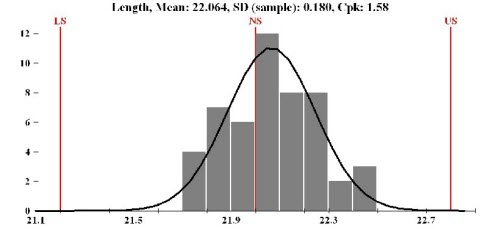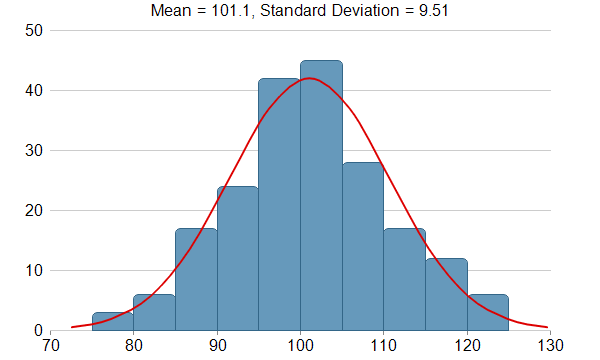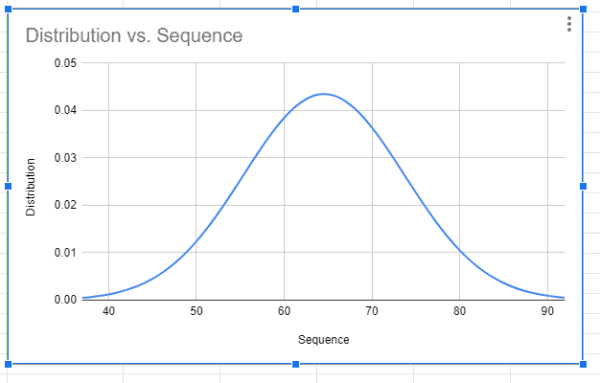
This histogram maker is only one graph maker we have available in our site. It is much better to use a normality test, like this The more formal name of a histogram of this shape is a normal curve. Just enter your scores into the textbox below. The Normal Curve Many continuous variables follow a bell-shaped distribution (we introduced this shape back in Section 2.2), like an individuals height, the thickness of tree bark, IQs, or the amount of light emitted by a light bulb. When the histogram has a bell-shape type of shape, we suspect that the distribution may be normal.Īssessing normality from the histogram itself could be tricky. This tool will create a histogram representing the frequency distribution of your data. Using the Histogram of Assess the distribution of the underlying variableĬonstructing a histogram, among other things, allows you to get a quick glance of the shape of the distribution we are dealing with. Sample data set. In order to add a normal curve or the density line you will need to create a density histogram setting prob TRUE as argument.
HISTOGRAM MAKER WITH NORMAL CURVE SOFTWARE
Sometimes the y-axis represents frequencies, and other times it represents relative frequencies (percentages), but regardless of the option, the shape will the same (provided that the same bins are used for the X-axis).Īlso, many software packages like SPSS or Minitab will be able to fit known distribution on top of a histogram to see how well the shape of the distribution fits the shape of the expected distribution. A basic histogram can be created with the hist function. There are variations that can be used for drawing a histogram. A histogram is an excellent visual tool to get a first glance perspective of the distribution properties of a random variable (especially if the same size of data collected is sufficiently large).

We have just completed our data formatting part. You will see the curve is somehow overlay on the histogram. =ArrayFormula(NORM.DIST(B1:B26,$D$1,$E$1,false)) Left click to choose the curve, right click and choose Source data, select the curve data, delete the thing in X Values, click OK. Step 5įinally, enter the below NORM.DIST normal distribution formula in cell C1 to return the normal distribution of the values in column B.

Before going to that see the screenshot up to this step. We are one step closer to creating our bell curve in Google Sheets. We can use several different commands to modify the appearance of the histograms. It will populate the numbers from 52 to 77 in the range B1:B26. You can add a normal density curve to a histogram by using the normal command: hist length, normal. Simply insert the above formula in the said cell. Here is an array formula to do that in cell B1. Now generate sequence numbers starting from F1 value to G1 value. The formula in G1 to get the value positive to the mean (the result will be 77.86). The formula in F1 to get the value negative to the mean (the result will be 52.28).

So in cells F1 and G1, insert the following formulas to get the probability values further away from the mean. =STDEV.P(A1:A28)Īs per the 68–95–99.7 rule mentioned above, 99.7% of the population of the dataset will be within +/- 3 Std Dev of the mean (central peak).

If the data is a sample, for example only two weeks of data from February, then use STDEV.S instead. Use STDEV.P in cell E1 to return the standard deviation of the entire population.


 0 kommentar(er)
0 kommentar(er)
